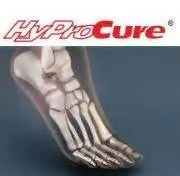Effect of High-Heels on the Feet
For hundreds of years, women have been wearing various kinds of high-heels for mostly aesthetic reasons. Women who wear high-heels appear to be taller and to have longer and thinner legs, and the wearer’s gait and posture changes. Though high-heels have had an association with femininity and have kept them popular over the years, there are definite health problems caused by wearing them too frequently.
The motion of the ankle joints is limited when heels are worn. The ankle joint is very important to the body when it comes to walking. Because of their location, these joints have a great deal of weight put on them. Thus, it is very important to keep them as healthy as possible. The Achilles tendon is the main tendon in the ankle. Wearing high-heels too often, studies have shown, can cause the calf muscle and Achilles tendon to shorten and stiffen, which can cause problems when shoes without heels are worn.
By putting a great deal of pressure on the ball of the foot, by forcing the toes into a small toe box, high-heels can cause or may worsen many foot problems, such as corns, hammertoe, bunions, Morton’s neuroma and plantar fasciitis.
Not only does wearing very high-heels regularly have negative effects on the feet, the rest of the body can suffer as well. The knees, one of the most important joints in the entire body, can be affected by wearing high-heels. High-heels causes the knees to stay bent all the time. Also, it can cause them to bend slightly inward as well. Doctors believe that women can suffer from osteoarthritis later in life because of constantly walking like this. By limiting the natural motion of the foot during walking, high-heels also cause an increased in stress on the knees.
Similarly, the back may also be affected by high-heels because it causes the back to go out of alignment. If high-heels are worn constantly, the spine’s ability to absorb shock can cause continued back pain. They can compress the vertebrae of the lower back, and can overuse the back muscles.
However, this is not to say that high-heels can never be worn. If worn occasionally, they will not cause serious problems. They should not be worn every day in order to avoid the long-term physical health problems of the feet, knees, ankles, and back like mentioned above.
Pregnancy and Foot Health
Many pregnant women complain about foot pain while they are expecting, primarily caused by weight gain and hormonal changes taking place in the body. By understanding how pregnancy impacts the health of a woman's feet, a pregnant woman can take action to keep her feet as healthy and comfortable as possible.
Because a woman's weight changes during pregnancy, more pressure is brought to bear on both the legs and the feet. This weight shift can cause two major foot problems: over-pronation, also known as flat feet, as well as edema, which is swelling of the feet. Over-pronation occurs when the arch of the foot flattens, causing the foot to roll inwards when the individual is walking, and can aggravate the plantar fascia tissues located along the bottom of the feet. If these tissues become inflamed, a pregnant woman can experience pain in the heel of the foot as well as severe foot pain while walking or standing. Swelling of the feet, or edema, often occurs in the later stages of pregnancy, caused by slow circulation and water retention, and may turn the feet a light purple color.
To keep feet in good health and prevent over-pronation, pregnant women should avoid walking barefoot and be sure they are wearing shoes that offer good arch support. Often a device known as an orthotic can be added to regular footwear in order to provide additional support for the feet during pregnancy. Any expectant mother whose feet hurt should first check to see if the shoes she is wearing are old, worn out and not offering the arch of the foot the proper support necessary to support and distribute the weight of her body during pregnancy.
To treat edema of the feet, a good start is to wear quality footwear which offers support and good circulation. Keep feet elevated whenever possible by using a foot stool while seated. Stay well hydrated by drinking plenty of water to prevent water retention in the feet. Any swelling that occurs in only one foot should be examined as soon as possible by a doctor.
Good foot health during pregnancy can help expectant mothers avoid foot pain that leads to other health problems. Massaging the feet and doing regular gentle exercise like walking aids in foot health by contributing to good circulation. Supportive shoes are also a good investment that will support foot health during pregnancy.
Proper Shoe Fitting
Proper shoe fitting is one of the most common concerns people have when it comes to the health of their feet. To some this may not seem like a major issue, but the reality is that improperly fitted shoes account for a tremendous amount of injuries to the foot. Because our feet, our posture, and our gait directly affect the bio-mechanics and the overall structure of our entire body, pains and discomforts felt elsewhere within the body can frequently be attributed to improperly fitted footwear. Here are a few factors to consider, which will help you select the proper footwear when shopping.
Do not purchase shoes with the expectation that they will stretch to accommodate the size of your feet. You are looking for shoes that fit correctly right away. If the shoes you purchase are too large and are slipping in the area of the heel while you walk, do not purchase them. Do not look favorably upon shoes that slip with the intention of wearing thicker socks to compensate for the slippage. Make certain that in the widest portion of the shoes, the ball of your foot, fits comfortably in the shoe.
It may be difficult to focus on these things with all the distractions of shopping, or tempting to ignore them because you badly want an uncomfortable shoe. However, if you cannot wear shoes because they hurt too much to use, your money and time will be wasted. When you get your new shoes home, put them on and walk around on a carpeted surface to see ensure your shoe's fit comfortably with normal activity.
With 33 joints, 26 bones, and over 100 ligaments, the potential for damage to the sensitive components within the foot are greater than many people realize. Finding a properly fitting shoe is the single most important factor you can do to help prevent injury and maintain optimal foot health. Adults tend to forget the fact that our feet continue to change as we grow older. So, even though they may no longer experience growth spurts associated with youth, their feet still change shape as they mature.
If you already have problems with your feet, wearing improperly fitted shoes can potentially exacerbate those problems. Fortunately, it does not require a tremendous amount of effort to find shoes that fit correctly. When shopping for shoes, keep in mind that improperly fitted shoes can not only cause a whole host of disorders and problems to occur within the feet themselves—they can affect the entire bio-mechanical structure of the body. Your posture and your stride are based on your feet, so your footwear can have a tremendous impact on the legs, back, and rest of your body. Finding the proper shoe fitting is essential to keep your feet and body healthly.
All About Broken Ankles
Broken ankles are a serious injury that can lead to an inability to walk, function, and also cause a significant amount of pain. A broken ankle is actually a break in one of the three bones in your body that connect at the ankle joint, the tibia, the fibula, and the talus. The tibia and fibula are your two primary leg bones that connect at the knee, which sit directly upon the talus bone. This is protected by a fibrous membrane that allows for movement in our ankle joint. A broken ankle is usually caused by the foot rolling under or twisting too far, causing one of these three bones to snap.
A broken ankle is different from an ankle sprain, which occurs when the ligaments are ripped or torn but no bones have been broken. However, a sprain can still be very severe, causing bruising in the foot and an inability to hold your own weight, much like a broken ankle would. If you cannot stand on your own weight and suspect that you have a broken ankle, the first thing to do would be to get an immediate x-ray to determine the severity of the break.
A common way to break your ankle is to roll over onto it with enough pressure to break the bones, usually done while engaging in exercise, sports, or some other physical activity. Another common cause is a fall or jump from a large height.
Broken ankles can cause severe pain, but immediate relief can come from elevating the feet above your head to reduce blood flow to the injured area. You can also apply ice packs to the ankles to help reduce the swelling, redness, inflammation, and pain. After these initial steps, getting a cast on and staying off your feet as much as possible will aid in the recovery of the broken ankle, because the less movement and stress the ankle has to endure, the more complete it will heal. A doctor can determine if surgery is needed in order to heal correctly. In these cases, an operation may be the only option to ensure the ability to walk properly again, followed by physical therapy and rehabilitation.
It is highly important to determine if surgery is needed early on, because a broken ankle can become much more severe than you realize. If not professionally treated, the broken ankle will inhibit your walking, daily functioning, and produce a large amount of pain, so the quicker you act, the better.













